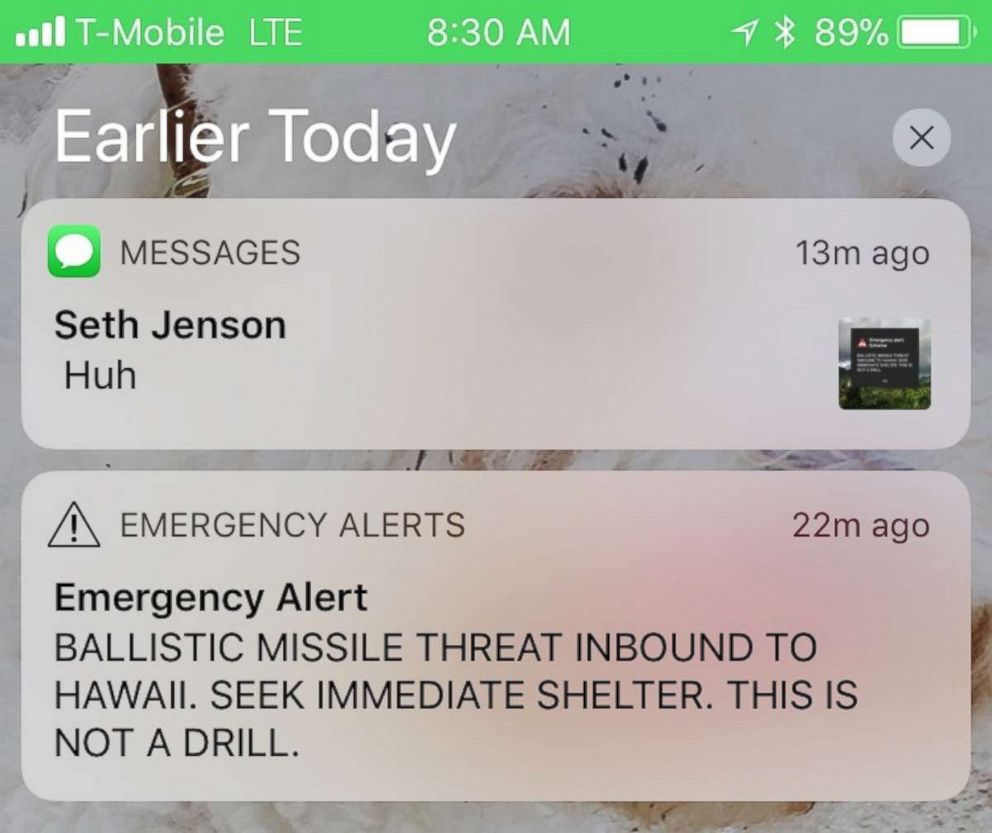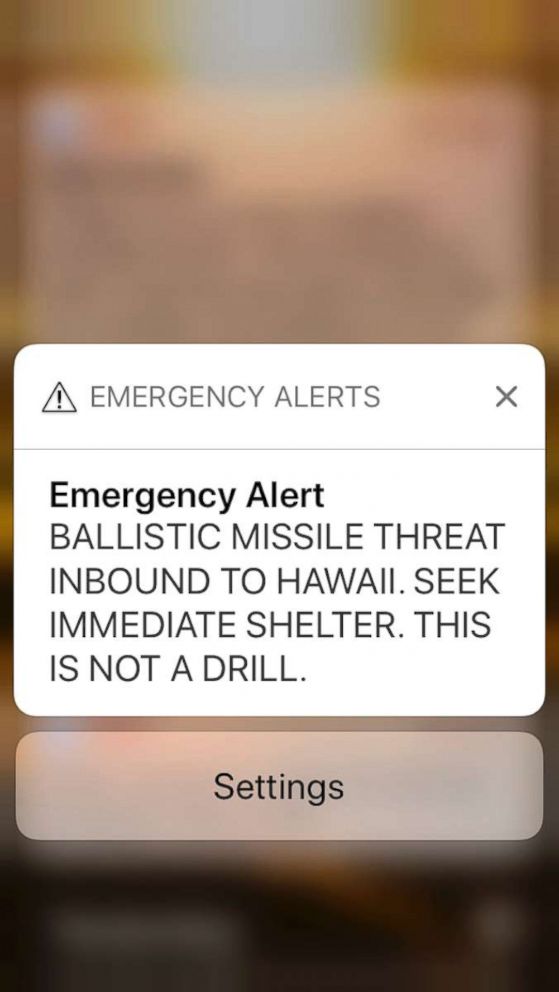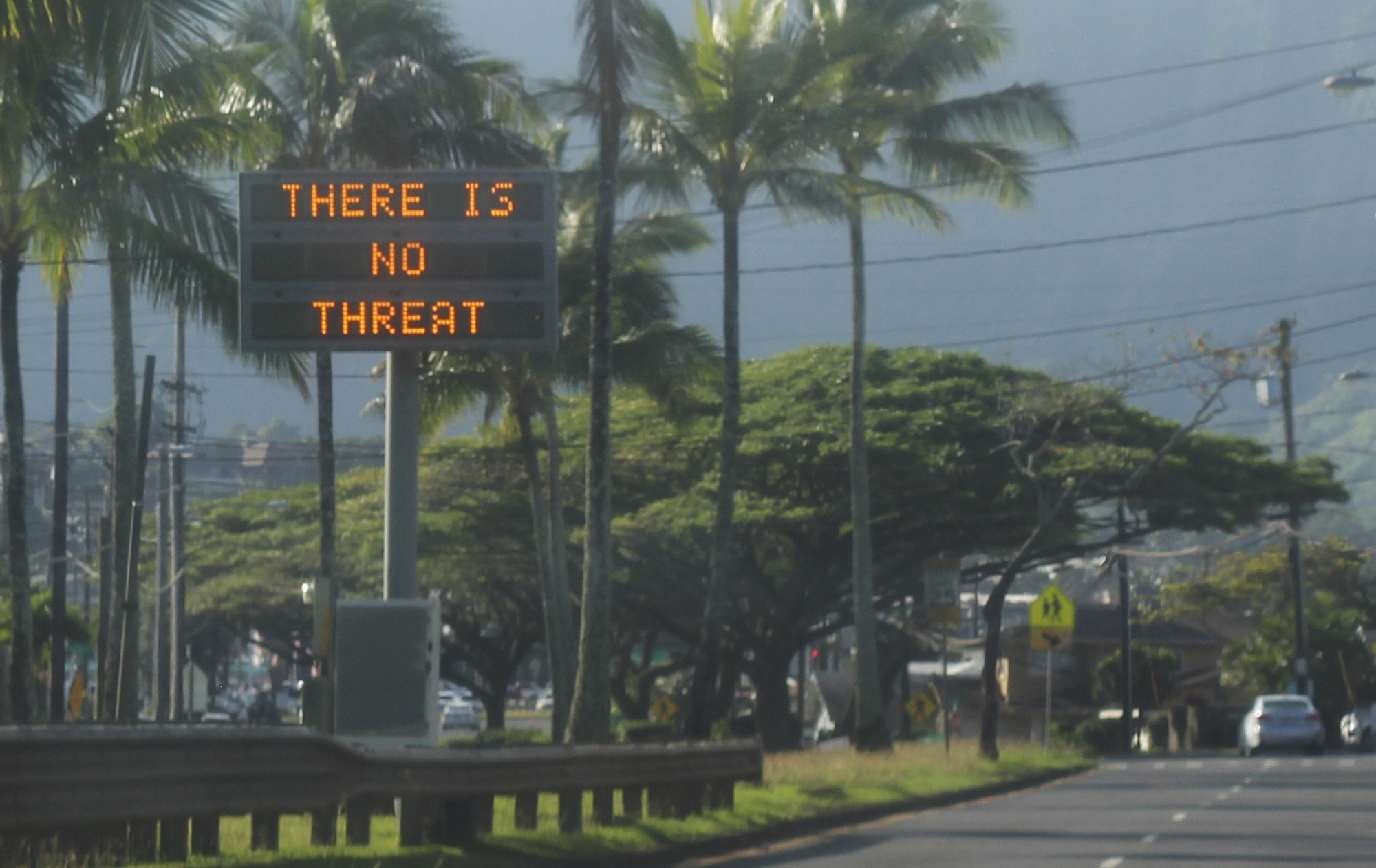OPINION: Hawaii false missile alert a warning to get our civil defense right amid N. Korea threat
Thinking about nuclear war is scary, but we have no choice.
— -- They issued an alert that essentially said, “You’ll be dead in 15 minutes.”
That’s it. No automated follow-up about what to do, where to go, how to survive after a blast, what the state and local government plans entailed. A friend in Hawaii told me, “All they did was tell me I have 15 minutes to think about my life.”
That’s the biggest failure in this incident: that the people of Hawaii lost faith in their government to fulfill its most basic responsibilities.
But don’t think Hawaii is an exception. This would have played out in much the same way in any state or community in the United States.

There is a saying in aviation that “complacency kills,” and the 30 years since the end of the Cold War have induced a complacency this country cannot afford in light of the new North Korea threat.
The Hawaii incident shows us that a lot of time and effort has been put into digital notification. What may be lacking is the capacity for response and recovery after a nuclear event. We had extensive civil defense plans during the Cold War and should once again.
We don’t need to go back to “duck and cover” but rather embrace the ubiquity of the Information Age to our advantage. Modern civil defense should be egalitarian.

And the Trump administration reaction today that there will soon be an exercise to test protocols at the Cabinet secretary level should not give comfort. It will likely be a table-top exercise that will not be much more than a checklist walk-through.
Walk through a plan but don’t do any free-play exercising that would point out gaps and weaknesses. Government officials will report out that everything is great. But it won’t really be.
What’s holding things back? The nature of bureaucracies.

In 2009, I had an editorial published in The New York Times that distilled the lessons of three years of civil-military disaster response with my Marines, working with Los Angeles and San Diego counties.
A couple of germane graphs:
“Despite billions spent since 9/11, we are still not well prepared to react to disease outbreaks, terrorist attacks and natural disasters — a fact Secretary of Homeland Security Janet Napolitano has been frank about in her brief time on the job. She has ruffled feathers by criticizing a $25 million national-security exercise the department undertook in 2007 as being too expensive, too unrealistic and ‘too removed from a real-world scenario.’ But her frustration is well founded and indicative of larger fundamental flaws...
Federal agencies, however, often rely on the sort of top-down, set-piece exercises Secretary Napolitano rightly denounced. Usually intended to validate broad protocols with mandates to meet fixed goals, they induce fear of failure and rarely allow — much less encourage — experimentation. Participants are usually reluctant to try new techniques because of a risk of institutional embarrassment. Worse, performance in formal exercises is often tied to future financing; thus the threat of lost jobs or promotions discourages adaptation and modernization.”
I checked with colleagues who continue to work these issues. Nothing much has changed in the interim.
Thinking about nuclear war is scary, something we’d like to pretend could never affect our day-to-day lives.
But given the current threat, all government has a responsibility to get civil defense right. A first step in this new nuclear age would be to put the failure in Hawaii to beneficial ends.
Former Deputy Assistant Secretary of State Steve Ganyard, a retired colonel and fighter pilot in the Marine Corps, is an ABC News contributor. Opinions expressed in this column do not necessarily reflect the views of ABC News.

